2024 is a milestone year for the Web3 industry. The market value of Crypto and the adoption of industry infrastructure have reached unprecedented heights. At the same time, the criminal industry has begun to use Crypto infrastructure to optimize its business or create new criminal paradigms. This report counts and discloses the scale of major crypto crime types and explains the impact of compliance facilities on the scale of the criminal industry, calling on the industry and government to pay attention to the harm caused by crypto crime.
Due to space limitations, this article only presents some of the report’s conclusions and data. Please visit Bitrace’s official website to download the full version.
https://bitrace.io/en/blog
Cryptocurrency crime remains a serious problem
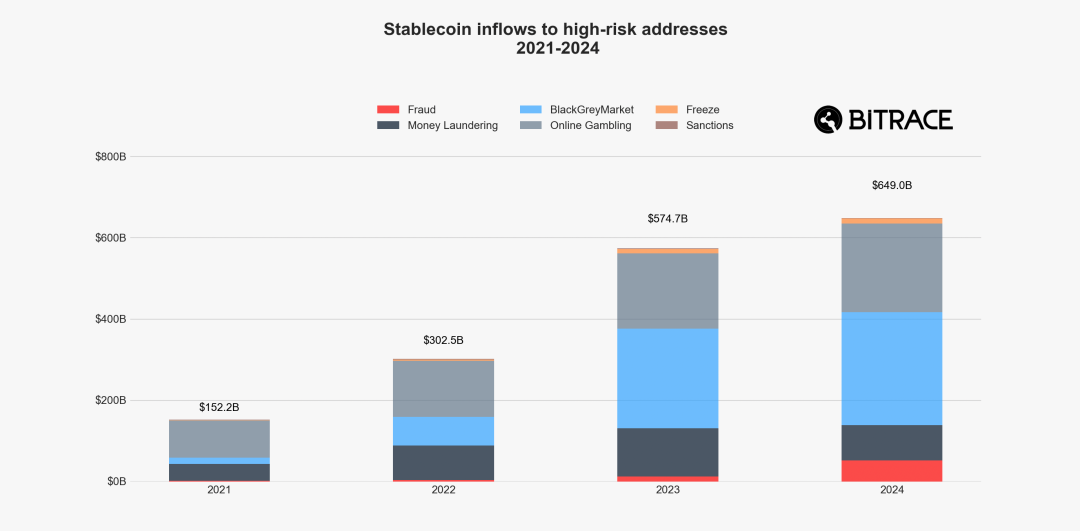
Amount of stablecoins received by high-risk addresses
Considering that risky activities mainly occur in the Ethereum and TRON networks, Bitrace defines the blockchain addresses used by illegal entities to receive, transmit, and store stablecoins (erc20_usdt, erc20_usdc, trc20_usdt, trc20_usdc) in these two networks as high-risk addresses. In the past 2024, the total amount of payments received by such high-risk addresses reached US$649 billion, slightly higher than the previous year.
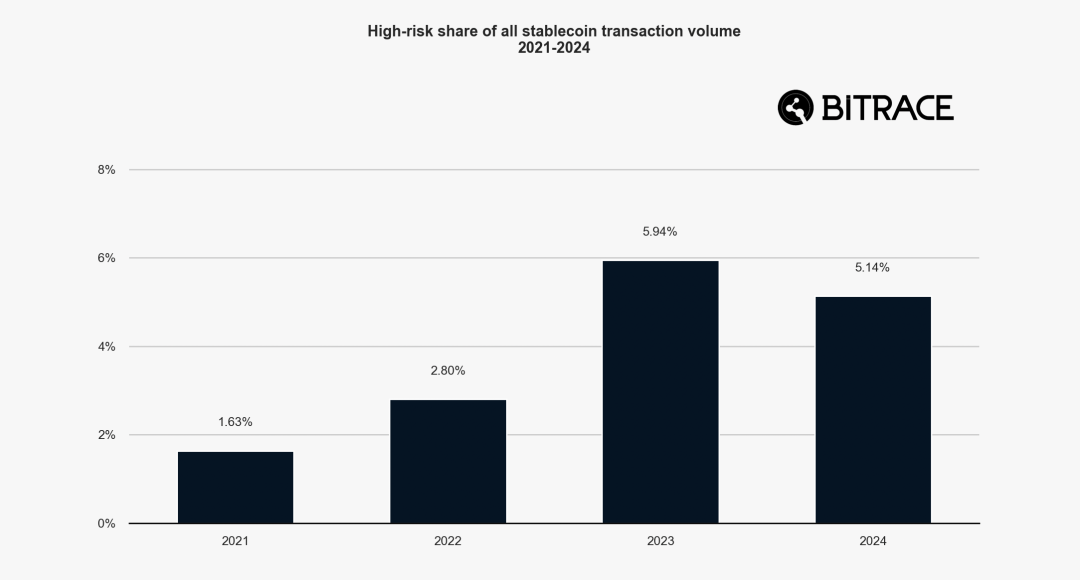
High-risk activities as a percentage of total stablecoin transaction volume
Calculated by trading volume, this part of high-risk activities accounted for 5.14% of the total stablecoin trading activities that year, a decrease of 0.80% compared to 2023, but still significantly higher than 2021 and 2022.
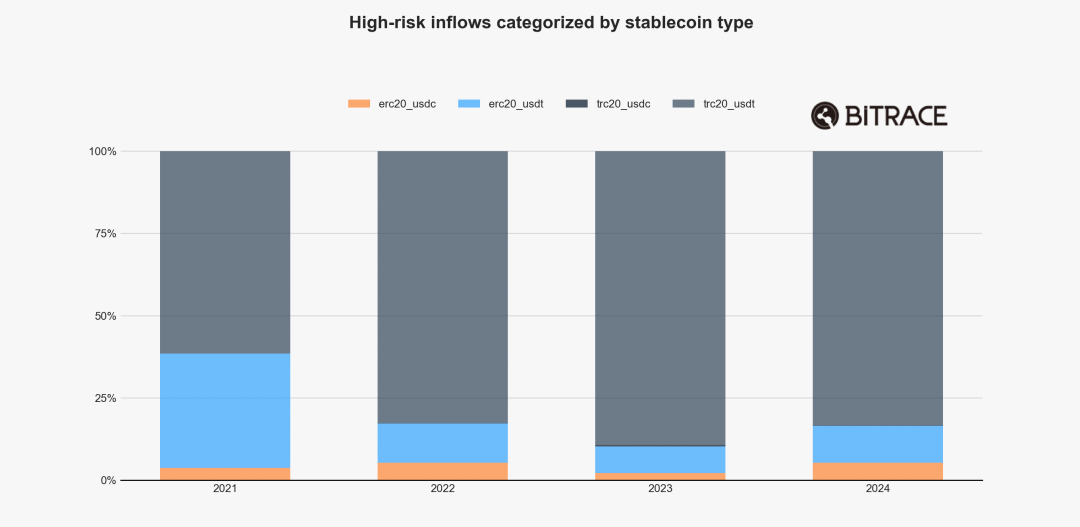
Classification of high-risk addresses receiving stablecoins
Calculated by stablecoin type, USDT in the TRON network accounted for the largest share from 2021 to 2024. However, in 2024, the shares of USDT and USDC in the Ethereum network increased.
Online gambling continues to grow
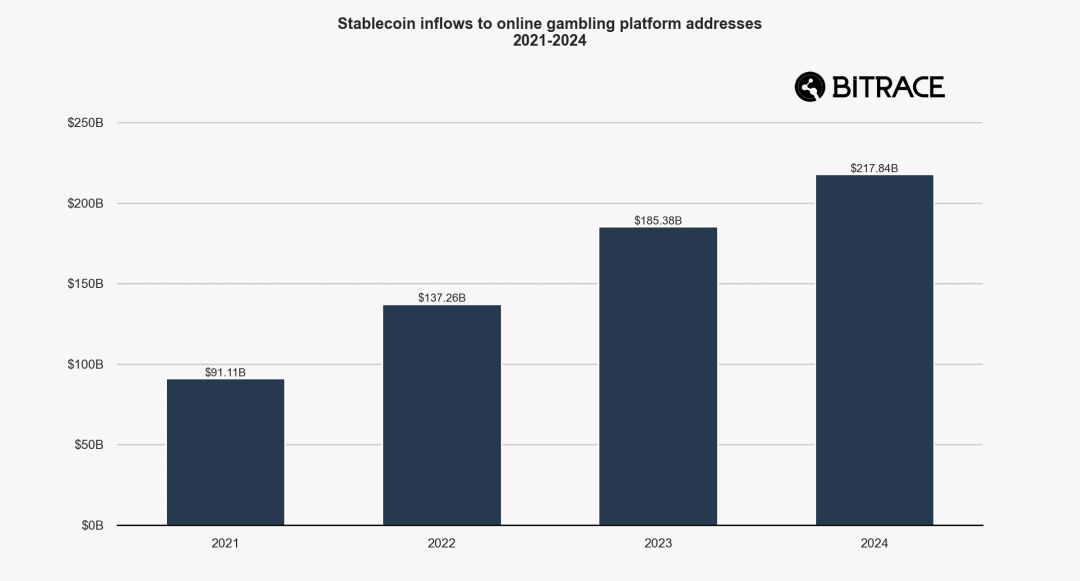
The amount of stablecoins collected by online gambling platforms
In 2024, the capital scale of online gambling platforms and the payment platforms that provide deposit and withdrawal services for them reached US$217.8 billion, an increase of more than 17.50% compared with 2023.
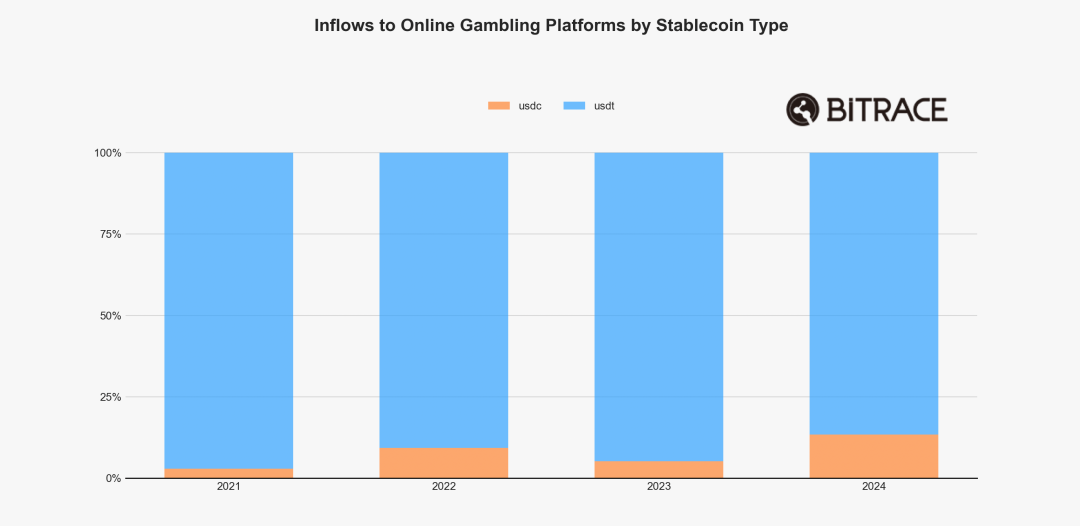
Classification of stablecoins collected by online gambling platforms
According to statistics on the types of stablecoins used by online gambling platforms, USDC's share in 2024 increased significantly, reaching 13.36%, much higher than 5.22% in 2023. This shows that as USDC's market share increases, its adoption in the field of online gambling has also greatly increased, although it is issued and regulated by compliant entities.
The scale of black and gray industry transactions remains unchanged
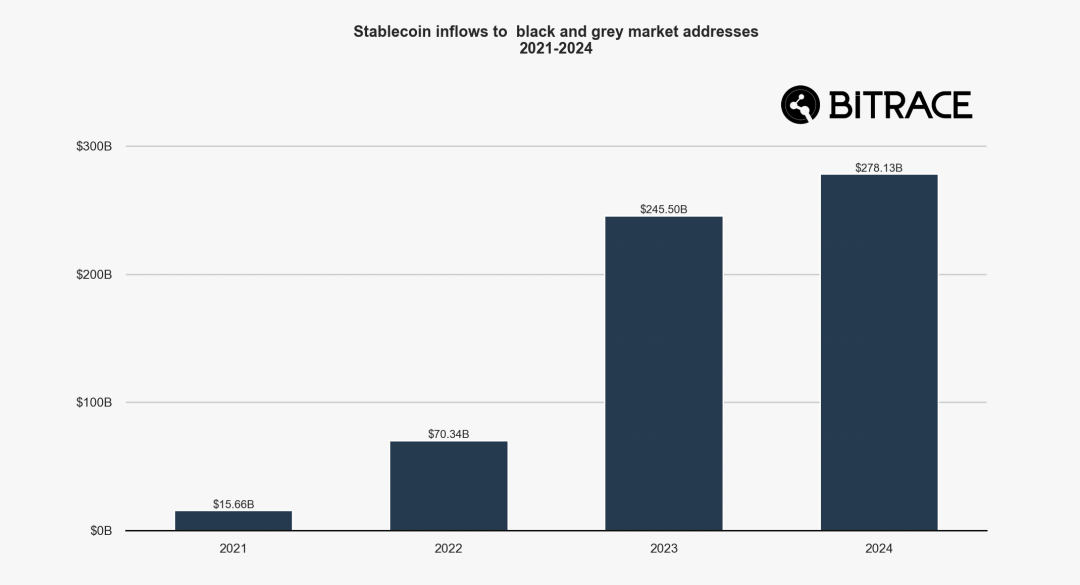
Amount of stablecoins received by black and gray industry transaction addresses
In 2024, business addresses related to black and gray market transactions on the Ethereum and Tron networks received a total of more than US$278.1 billion, slightly higher than in 2023, and the transaction volume in these two years far exceeded that in 2021 and 2022.
Inseparable from the development of the black and gray industries is the cryptocurrency guarantee trading platform. Such institutions can provide guarantee services for almost all upstream and downstream links of the black and gray industries and build trust among criminals.
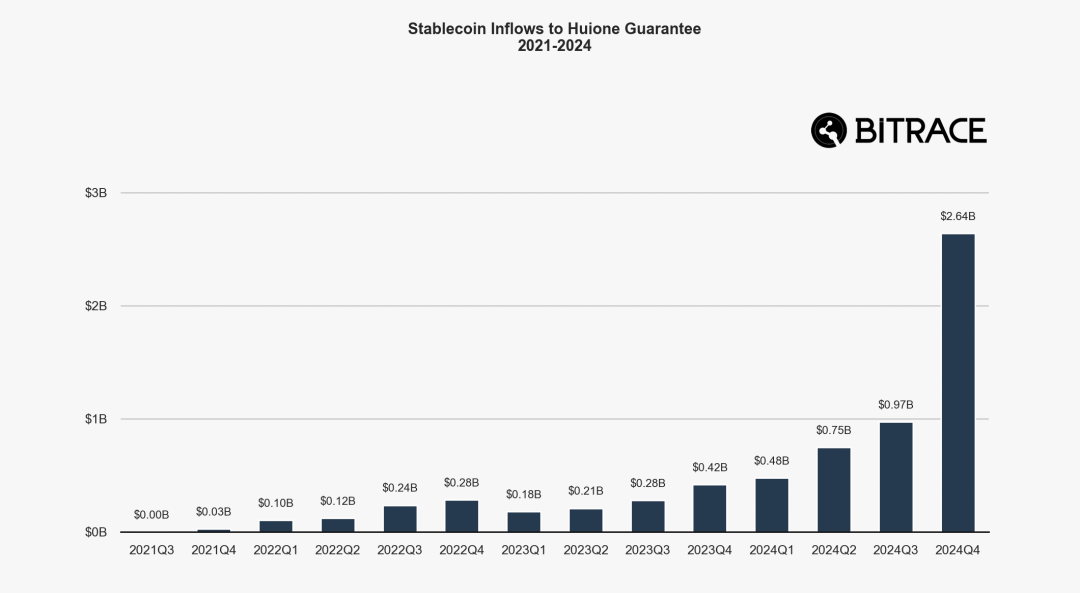
Amount of stablecoins collected by Haowang Guarantee
The rise of Haowang Guarantee and its competitors in Southeast Asia has been accompanied by the gradual popularization of stablecoins in local real economic activities. This trend was particularly evident in 2024, when its business scale had expanded to US$2.64 billion in the fourth quarter of that year.
Crypto fraud is increasing dramatically
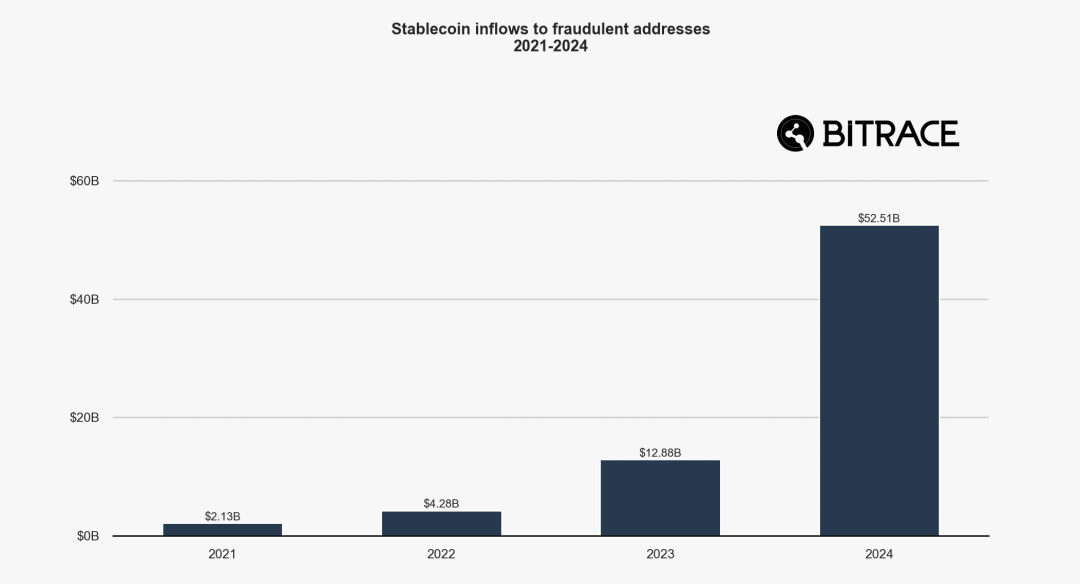
Amount of stablecoins received by fraudulent addresses
The scale of stablecoin collection in blockchain addresses associated with fraudulent activities in 2024 has exploded. Compared with 2021-2023, the scale of funds in that year has reached 52.5 billion US dollars, exceeding the total of previous years.
However, this alarming growth trend may not be completely accurate, because the statistical value is limited by the statistical methods of security vendors and the increase in the level of fraud by illegal entities. For example, as security vendors support many new public chains, more criminal incidents will be observed, which means that incidents that occurred in the past may not be included in the statistics; cases that occurred in centralized institutions and were not actively disclosed by the victims cannot be included in the statistics.
With the improvement of statistical methods and the increase in case disclosures, this data will grow further in next year's investigation report.
Money laundering begins to shrink
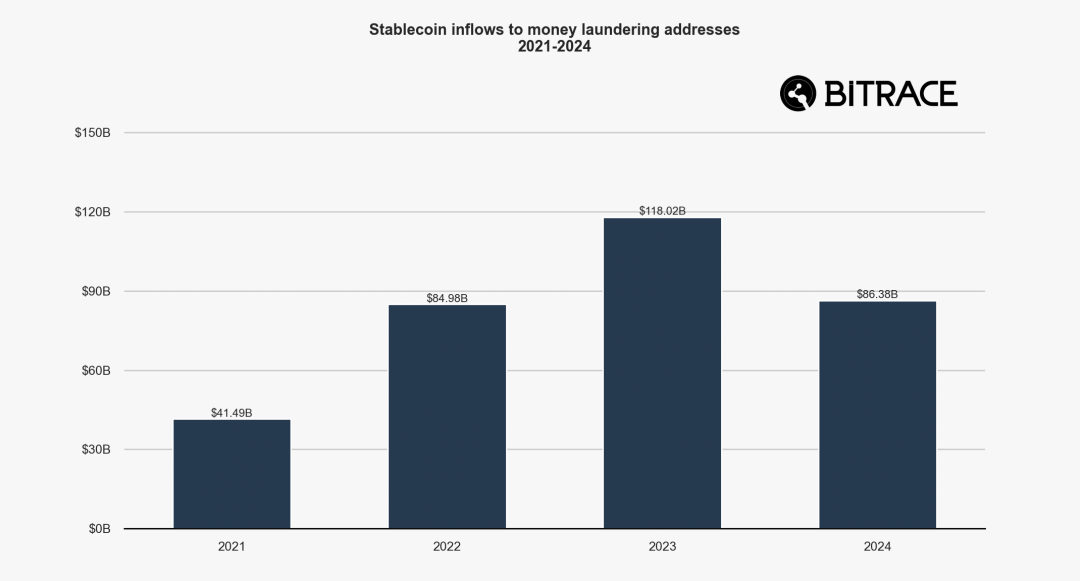
Amount of stablecoins received by money laundering addresses
In 2024, blockchain addresses related to money laundering received a total of $86.3 billion worth of stablecoins, slightly lower than in 2023 and the same as in 2022. This value may indicate that the major law enforcement activities and regulatory legislative activities of major policy bodies in the past two years have effectively suppressed the money laundering crime situation in the crypto industry.
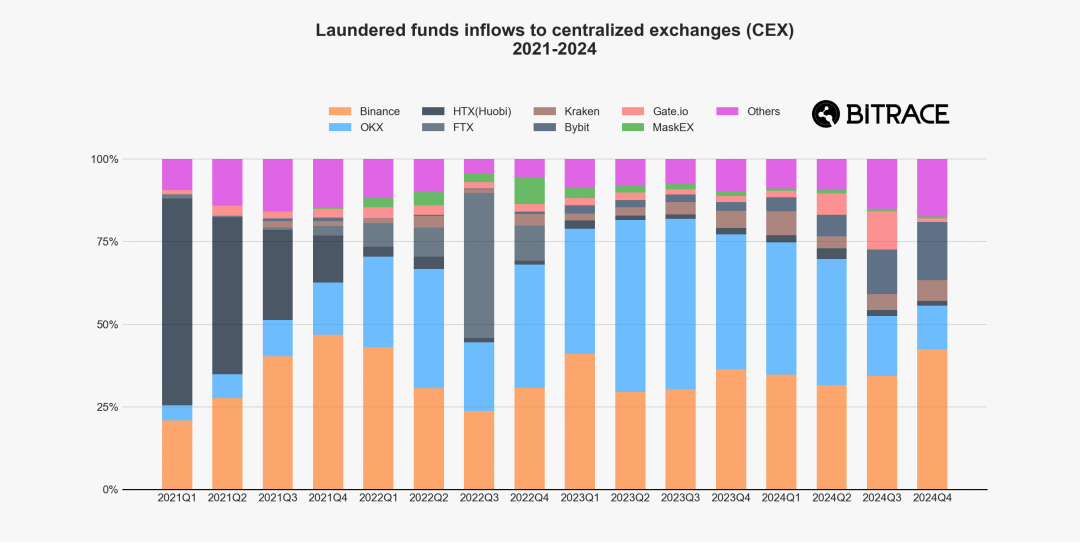
The proportion of money laundering stablecoins collected by major centralized trading platforms
Considering that centralized exchanges have a unique advantage over other entities in terms of cash realization and are more likely to be favored by money laundering gangs, Bitrace conducted a fund audit of the hot wallet addresses of major centralized cryptocurrency trading platforms.
The results are similar to those in the investigation of the fraud chapter. The scale of money laundering funds collected by the platform is generally proportional to the scale of its business, but OKX's proportion has decreased significantly in recent quarters, which may be the result of its compliant operation.
Stablecoin on-chain freezing activity has increased significantly
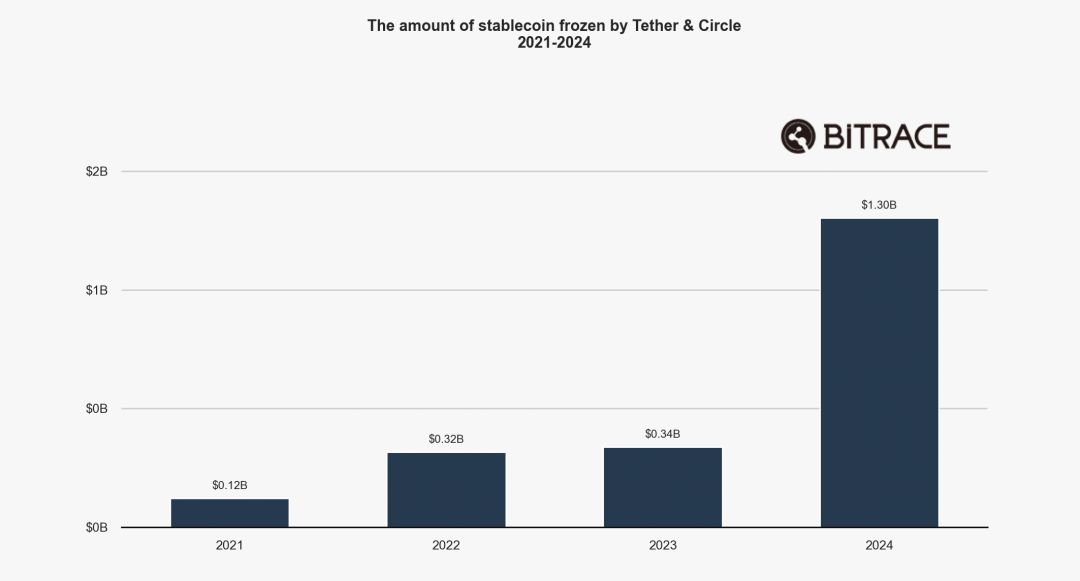
Amount of stablecoins frozen by Tether and Circle
2024 is the year when stablecoin issuers actively cooperate with law enforcement. Tether and Circle have frozen more than US$1.3 billion worth of stablecoins in the Ethereum and Tron networks, twice the amount frozen in the previous three years.
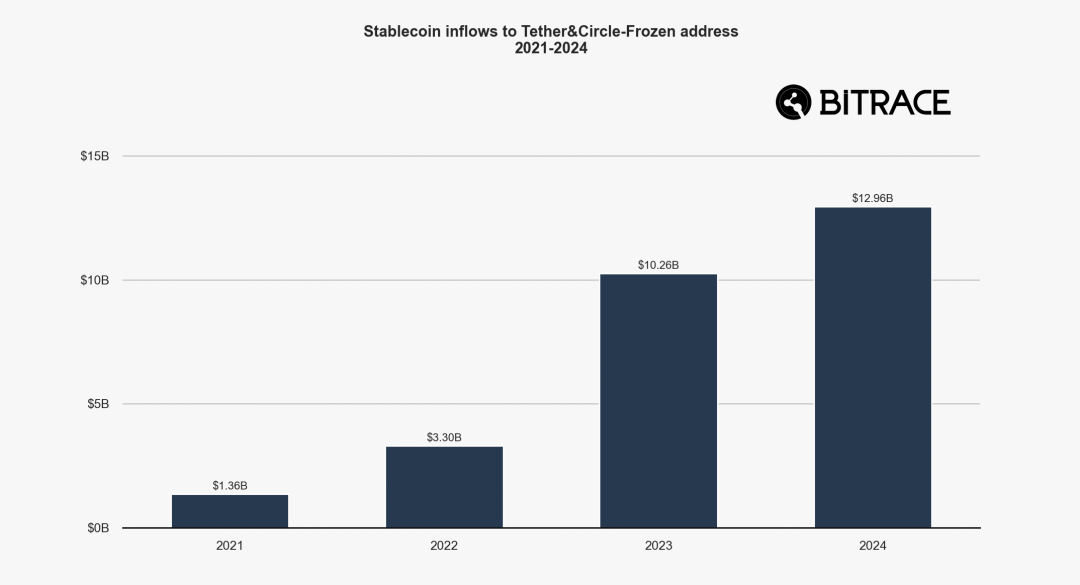
Amount of stablecoins received by frozen addresses in the current year
Statistics on fund transfer activities of frozen addresses in that year show that the transaction volume in 2024 reached US$12.9 billion, which was basically the same as in 2023. This shows that on-chain crypto criminal activities began to be active several years ago, but were not effectively cracked down until 2024.
*It is worth emphasizing that not all drivers of frozen addresses are involved in criminal cases. Bitrace did not exclude this part in this statistics, so the actual scale will be slightly smaller.
OFAC and NBCTF Sanctions Trends
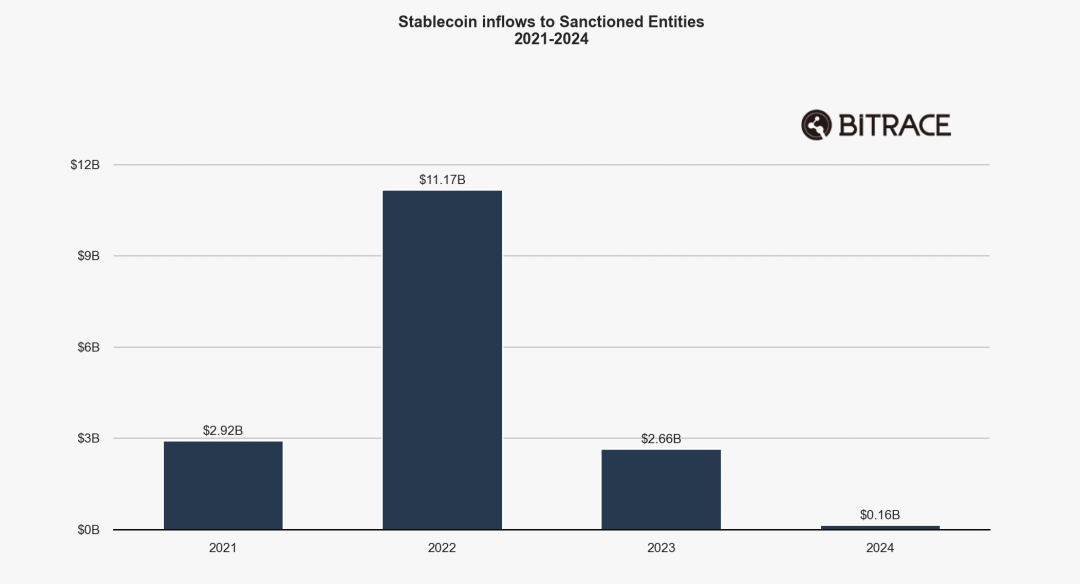
Amount of stablecoins received by addresses associated with OFAC and NBCTF sanctioned entities
The Office of Foreign Assets Control (OFAC) under the U.S. Treasury Department and the National Counter-Terrorism Financing Bureau (NBCTF) of Israel are two agencies related to sanctions and counter-terrorist financing. They have a lot of cooperation in combating terrorist financing and financial networks related to terrorist organizations (such as Hamas). The funds of blockchain addresses related to sanctioned entities disclosed by these two organizations are counted. The overall scale of funds reached its highest in 2022 and has since declined year by year.
Although regulatory measures by government agencies will have a huge impact on the business of sanctioned entities, they will have little effect on criminal groups that use these infrastructures to carry out illegal activities, because the anonymity and non-repudiation of encryption technology determine that such entities are difficult to sanction and highly replaceable. Regulators should conduct more in-depth investigations into encryption crimes and take appropriate law enforcement actions against criminal gangs.
Regulation brings positive impact to Hong Kong
2024 is the year when the crypto industry accelerates compliance. From a global perspective, major regulatory agencies have shifted their attitudes towards cryptocurrencies from waiting to more actively intervene, pushing the industry towards a more standardized and transparent direction. Take Hong Kong as an example.
Hong Kong's compliance policy has built a safer and more controllable crypto ecosystem through clear legal requirements, customer fund protection, crackdown on illegal activities, attraction of institutional funds, and alignment with international standards. This not only reduces direct financial losses caused by hacker attacks, platform bankruptcy or legal penalties, but also reduces indirect risks by enhancing market trust and stability. For crypto entities, although compliance costs increase in the short term, in the long run, it significantly reduces the possibility of funds being exposed to uncontrollable risks.
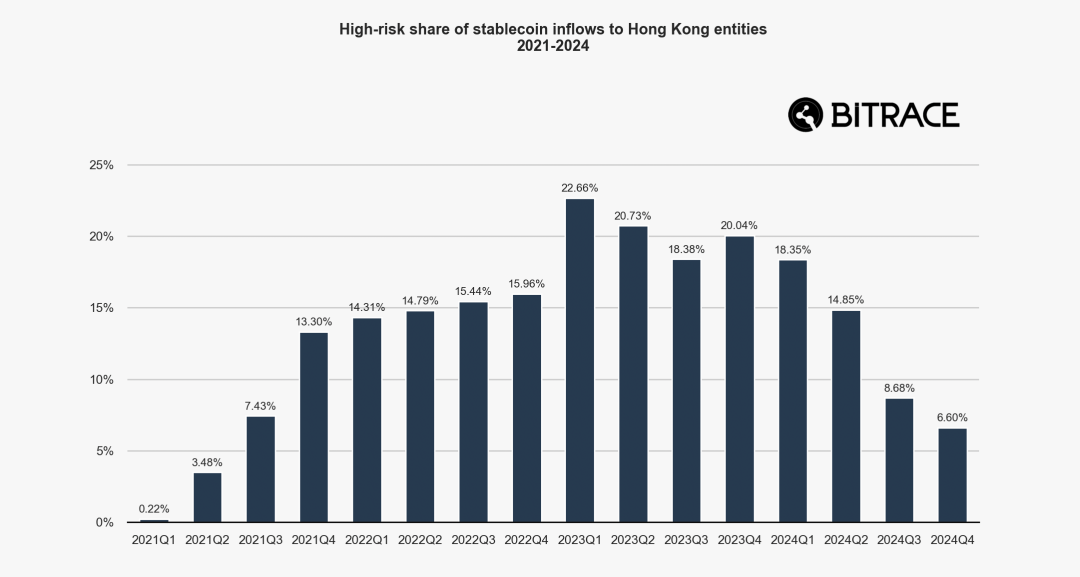
The proportion of high-risk funds in Hong Kong Web3 entity stablecoin revenue
A fund analysis was conducted on the VATP and VAOTC addresses that mainly serve Hong Kong customers. The data showed that after the third quarter of 2023, the proportion of risky stablecoins flowing into the local area decreased sharply, indicating that after the release of compliance policies and several landmark currency-related cases, local stablecoin trading activities related to risky activities have been effectively suppressed.
Summarize
2024 is the year of the industry's comprehensive revival and an important year for major economies to begin to take the industry seriously. Although the scale of crypto crimes has not decreased, top-down compliance supervision policies and bottom-up industry self-discipline have brought positive effects to the crypto industry in some countries or regions.
We believe it is self-evident that the industry will usher in a future of greater security and trust.












